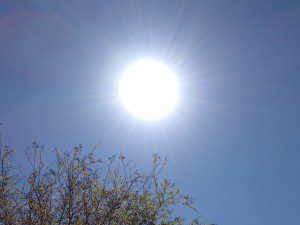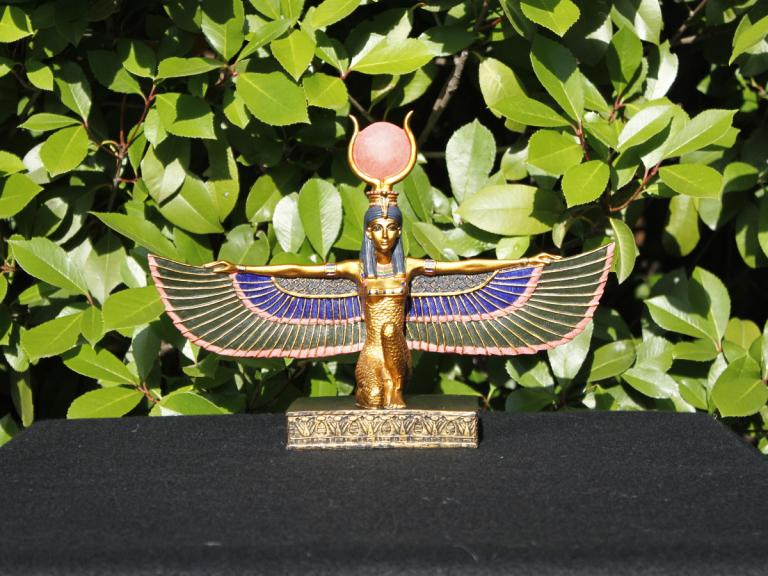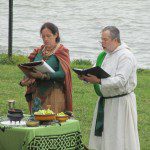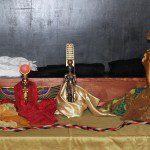 There are quite a few Summer Solstice articles on the Patheos Pagan Channel and all the ones I’ve read have been good. I encourage you to read two or three or all of them and then ask yourself what they have in common, other than the date and perhaps a mention of the sun. The answer is “not much.”
There are quite a few Summer Solstice articles on the Patheos Pagan Channel and all the ones I’ve read have been good. I encourage you to read two or three or all of them and then ask yourself what they have in common, other than the date and perhaps a mention of the sun. The answer is “not much.”
Summer Solstice is perhaps the least well-defined of all the eight celebrations of the Wheel of the Year. That’s partially because it has no presence in the mainstream culture. Imbolc has Groundhog Day and Ostara has Easter, which shares a name and a season even if it isn’t the cultural appropriation some Pagans like to claim it is. Winter Solstice has Christmas and Hanukkah, while fragments of Beltane and Samhain survive in May Day and Halloween.
But Summer Solstice? I can’t think of a thing. The de facto beginning of summer in the United States is the Memorial Day weekend. Both culturally and weather-wise, the middle of summer is somewhere around the end of July.
In a mythological cycle based on subsistence agriculture, Summer Solstice isn’t very important. Planting took place in the spring and the harvest won’t come till late summer or fall. Summer Solstice is the longest day, but if your only source of light at night is candles, shortening days aren’t exactly something to celebrate. That’s another reason why I argue the thousands of people who will crowd Stonehenge on Saturday morning are there six months and 12 hours out of phase.
You could easily drop Summer Solstice from your list of high days. Still, it has astronomical significance, and there’s a nice symmetry that comes from dividing the year into eight roughly equal seasons. Plus it gives us an opportunity to build our own traditions around the Summer Solstice.
The first public ritual I ever led was Denton CUUPS Summer Solstice in 2003: “A Druid Midsummer.” That ritual – and the process by which it was created – deserves its own post, but for our purposes here, let’s just say it was successful and I hoped it would become a local expression of the fine old Druid tradition of celebrating the Summer Solstice, a tradition that dates far back into pre-history… if by pre-history you mean the late 19th century.
It was not to be. The next year there was a strong desire to do an Egyptian temple ritual, and considering we wanted to honor Ra – a Sun God – Summer Solstice seemed the ideal time to do it.
As a group I think we put more time into that first Egyptian Summer Solstice than any ritual before or since. This wasn’t one person writing and directing – it was a true group effort. We met to talk about what we wanted to do. We discussed how this would be very different from the Wiccan-influenced liturgy we usually used. We identified resources and assigned people to research them. We followed up with meetings to see how best to arrange the material we found.
We did lots of spiritual preparation too. We all agreed to do nine nights of meditation, each on one member of the Ennead. This began the hardening of my polytheism – my experience of each of the Neteru was so different I started to understand they had to be more than aspects or faces of one great deity.
We had a very small turnout for the ritual, which was disappointing. But by that time we understood we were doing this for the Gods and not for any audience, so we went ahead with enthusiasm. It went very well.
The aftermath went even better. We had a huge turnout for Lughnasadh six weeks later, picked up several new members, and we’ve been going strong ever since. When we started talking about the next year’s Summer Solstice there was no question we’d do another Egyptian temple ritual. It’s become our local tradition – this Saturday will mark Denton CUUPS’ 11th consecutive year for Egyptian Summer Solstice.
Like the best traditions, this tradition developed organically. We did something, found it to be a good thing, so we did it again. And again. And again. It’s not a stagnant tradition – the main event of the ritual changes every year, and we’ve revised our opening liturgy and invocations several times. The constant has been our commitment to the Neteru, and to the intent and form of ancient Egyptian temple rituals and our evolving understanding of them.
And of course, the Summer Solstice.
May your Solstice be blessed, no matter what tradition you observe… or build.
















